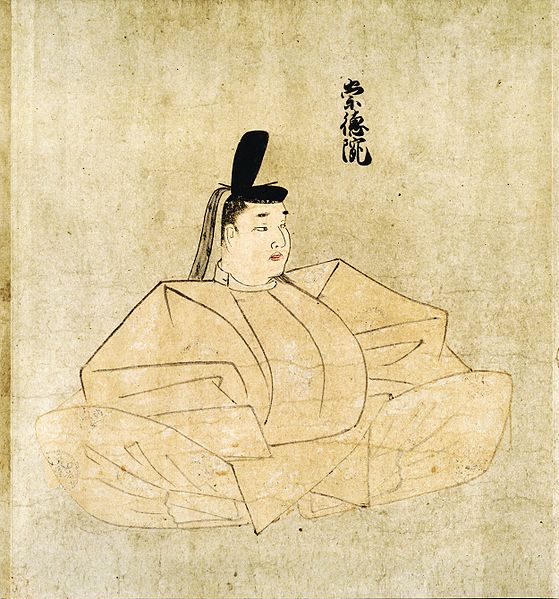<Back to Index>
- Mathematician William Feller, 1906
- Painter Marc Chagall, 1887
- Emperor of Japan Sutoku, 1119
PAGE SPONSOR

Emperor Sutoku (July 7, 1119 – September 14, 1164) was the 75th emperor of Japan, according to the traditional order of succession.
Sutoku's reign spanned the years from 1123 through 1142. Before his ascension to the Chrysanthemum Throne, his personal name (his imina) was Akihito.
Note: Although the Roman alphabet spelling of the name of this twelfth-century emperor is the same as that of the personal name of the current sovereign of Japan, the kanji are dissimilar. Sutoku was the eldest son of Emperor Toba. Some old texts say he was actually the son of Toba's grandfather, Emperor Shirakawa. The major events of his life are In 1151, Sutoku ordered Waka imperial anthology Shika Wakashū. In 1156, after failing to put down the Hōgen Rebellion, he was exiled to Sanuki Province (modern-day Kagawa prefecture on the island of Shikoku). Emperor Sutoku's reign lasted for 18 years: two years in the nengō Tenji, 5 years in Daiji, 1 year in 'Tenshō, 3 years in Chōshō, 6 years in Hōen, and 1 year in Eiji. The site of Sutoku's grave is settled. This emperor is traditionally venerated at a memorial Shinto shrine (misasagi) at Kagawa. The Imperial Household Agency designates this location as Sutoku's mausoleum. It is formally named Shiramine no misasagi. Kugyō (公卿) is a collective term for the very few most powerful men attached to the court of the Emperor of Japan in pre-Meiji eras. In
general, this elite group included only three to four men at a time.
These were hereditary courtiers whose experience and background would
have brought them to the pinnacle of a life's career. During Sutoku's
reign, this apex of the Daijō-kan included: Sesshō, Fujiwara Tadamichi, 1097 – 1164; Daijō-daijin, Fujiwara Tadamichi; Sadaijin; Udaijin; Nadaijin, Fujiwara Yorinaga, 1120 – 1156; Dainagon. The years of Sutoku's reign are more specifically identified by more than one era name or nengō. Hōan (1120 – 1124); Tenji (1124 – 1126); Daiji (1126 – 1131); Tenshō (1131 – 1132); Chōshō (1132 – 1135); Hōen (1135 – 1141); Eiji (1141 – 1142). After
Sotoku's abdication and exile, he devoted himself to monastic life. He
copied numerous scriptures and offered them to the court. Fearing that
the scriptures were cursed, the court refused to accept them. Snubbed, Sotoku was said to have resented the court and, upon his death, became an onryō.
Everything from the subsequent fall in fortune of the Imperial court,
the rise of the samurai powers, draughts and internal unrests were
blamed on his haunting. Alternatively, he was said to have transformed into an Ootengu (greater tengu), whom, along with the nine-tailed kitsune of Tamamo-no-Mae and the oni Shuten Dōji, are often called the three greatest yōkai of Japan.